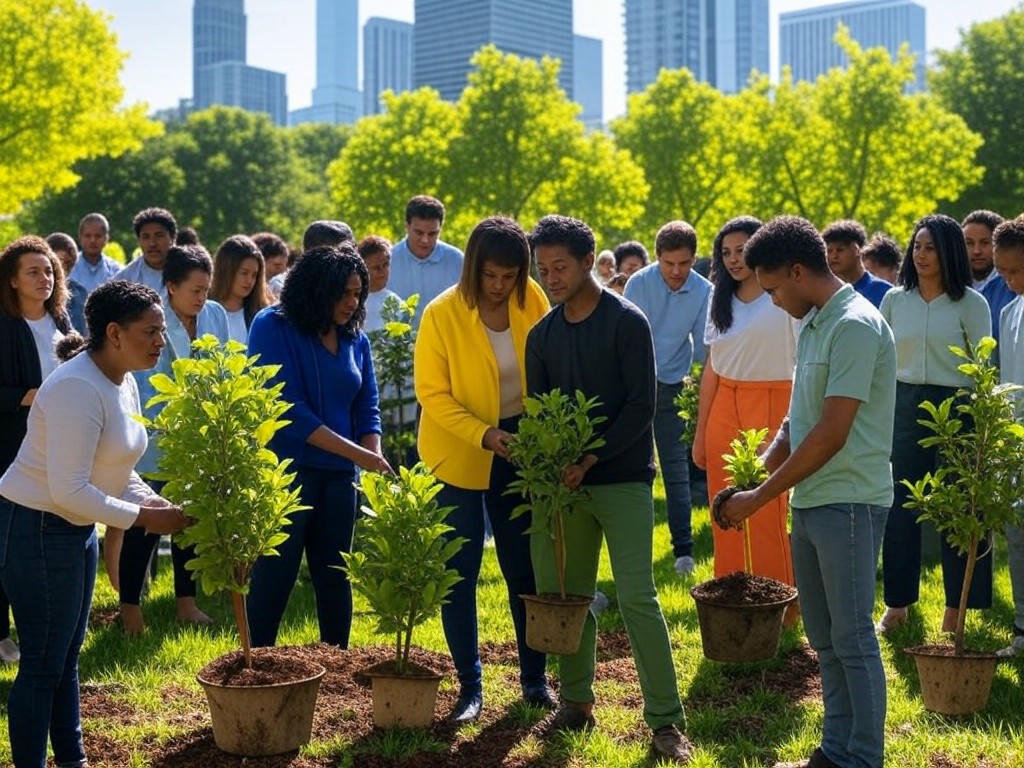
State of Black Chicago 2025 Report: Key Urban League Insights
Chicago Urban League Unveils the State of Black Chicago 2025 Report
The Chicago Urban League kicked off its annual Policy Summit on May 6, 2025, at Venue SIX10 on South Michigan Avenue, drawing leaders from business, civic groups, and local communities to dive into pressing issues. At the heart of the event was the release of the State of Black Chicago 2025 report, a vital tool that’s been shaping conversations on equity for years. This document builds on over a century of the Urban League’s work, focusing on economic empowerment and breaking down barriers that hold back Black Chicagoans from true prosperity.
Imagine walking into that summit, surrounded by people passionate about change—it’s not just data on a page; it’s a call to action. The State of Black Chicago 2025 report offers a fresh, detailed look at the challenges facing African Americans in the city, backed by evidence that could guide policymakers and community advocates toward real solutions. By spotlighting disparities in areas like housing, jobs, and services, this report reminds us that achieving racial equity isn’t optional—it’s essential for Chicago’s future.
Key Insights from the State of Black Chicago 2025 Report
Diving deeper, the State of Black Chicago 2025 report draws from years of research to highlight ongoing inequities while proposing ways forward. It’s eye-opening to see how these patterns persist, even as the city evolves, and this latest edition brings new data to the table. What makes it stand out is its blend of analysis and practical advice, urging stakeholders to address the root causes head-on.
Tackling Persistent Housing Disparities in Black Chicago
One of the most striking findings in the State of Black Chicago 2025 report is the growing gap in home values between racial groups in Chicago. Back in 1980, that difference was around $50,000, but it’s ballooned since then, affecting everything from family wealth to neighborhood stability. Think about what that means for generations: families struggling to build equity while others thrive, all within the same city limits.
This report likely updates those figures, showing how housing disparities continue to widen and impact Black communities. It’s not just numbers—it’s about real people facing barriers to owning homes or investing in their neighborhoods, and the report calls for targeted efforts to close this gap for good.
How City Services Can Better Serve Black Chicago Residents
Another key area the State of Black Chicago 2025 report explores is the uneven delivery of city services across Chicago’s neighborhoods. From public transportation to health resources, not everyone gets the same level of support, and that’s a problem that hits Black communities hardest. Have you ever wondered why some areas seem overlooked when it comes to basic upkeep?
The report outlines disparities in services like infrastructure maintenance, emergency responses, and educational access, painting a clear picture of where improvements are needed. By examining these issues, it offers a roadmap for making services more equitable, ensuring that every resident, regardless of their zip code, has what they need to thrive.
Economic Opportunities and Barriers in Black Chicago
Economic empowerment is a cornerstone of the State of Black Chicago 2025 report, zeroing in on employment, wages, and entrepreneurship for Black Chicagoans. With programs like the Urban League’s Career Readiness initiatives already in play, this section provides context on why disparities persist despite progress. It’s frustrating to see talented individuals held back by systemic issues, isn’t it?
Specific challenges highlighted include wage gaps, limited access to capital for Black-owned businesses, and hurdles in workforce development. The report doesn’t just point out problems; it suggests strategies to boost economic mobility, helping readers understand how policy changes could open doors for more people.
Broader Challenges Shaping Black Chicago Today
Navigating Post-Pandemic Recovery in Black Communities
The State of Black Chicago 2025 report doesn’t ignore the lasting effects of the COVID-19 pandemic, which hit communities of color disproportionately hard. We’re still feeling the ripples in areas like health care and job recovery, and this analysis brings those inequalities into sharp focus. What if we used this moment to build back better?
By examining ongoing disparities in employment recovery and small business survival, the report advocates for targeted interventions. It’s a reminder that equity in recovery isn’t automatic—it requires deliberate, community-centered efforts to ensure Black Chicagoans aren’t left behind.
Addressing Ongoing Social Justice Issues
Recent years have spotlighted racial justice movements, and the State of Black Chicago 2025 report ties those national conversations to local realities. From policing to community safety, it assesses progress and setbacks in Chicago. How can we turn awareness into lasting change?
This section likely discusses how events have influenced policy, urging continued advocacy to dismantle systemic barriers. It’s about fostering a city where everyone feels secure and valued, not just in theory but in practice.
Policy Recommendations from the State of Black Chicago 2025
The real power of the State of Black Chicago 2025 report lies in its actionable advice, moving beyond diagnosis to offer evidence-based solutions. It’s like a blueprint for advocates and leaders, packed with ideas that could transform communities. If you’re involved in policy work, this is a must-read for inspiration.
Strategies for Housing Equity and Community Development
To combat housing disparities, the report proposes investments in underserved neighborhoods and anti-displacement policies. Imagine neighborhoods where families can stay and build roots without fear of gentrification sweeping them away. These recommendations include expanding affordable housing and enforcing fair lending practices to promote generational wealth.
By prioritizing community-based models, the State of Black Chicago 2025 report aims to preserve neighborhood identities while fostering growth. It’s about creating homes that support, rather than hinder, the dreams of Black residents.
Improving Public Services for Greater Equity
For better service delivery, the report suggests data-driven approaches to resource allocation, ensuring historical inequities are addressed. Transparency and community oversight could make a huge difference, don’t you think? Things like partnerships between city agencies and local groups might help bridge the gaps.
Equity-focused budgeting is another key idea, making sure funds go where they’re needed most. This isn’t just about fixing potholes—it’s about building trust and fairness into the system.
Initiatives for Economic Empowerment
On the economic front, the State of Black Chicago 2025 report calls for expanded workforce programs and reforms to boost Black business participation. Picture more opportunities in high-growth sectors, coupled with financial literacy efforts to help people build wealth. These steps could unlock potential that’s been waiting for the right support.
From entrepreneurship funding to educational partnerships, the recommendations are practical and forward-thinking. They encourage a cycle of growth that benefits everyone in the community.
Bringing the State of Black Chicago 2025 Report to Life Through Community Action
Forging Collaborative Partnerships
The report’s impact relies on partnerships with government, businesses, and nonprofits, all working together to implement its findings. The Chicago Urban League is leading the charge, engaging diverse groups to turn recommendations into reality. What could your organization contribute to this effort?
These collaborations include measurable goals and accountability, ensuring progress is tracked and celebrated. It’s a team effort that could redefine how Chicago tackles inequality.
Empowering Communities Through Education and Programs
Beyond policy, the Urban League is rolling out initiatives like the “Budget Like a Baddie” workshop to build financial skills directly. The State of Black Chicago 2025 report inspires these programs, making economic concepts accessible and actionable. Have you tried something similar in your own life?
By focusing on awareness and engagement, the report helps communities take control of their futures. It’s about equipping people with the tools they need to succeed.
The Legacy and Mission Behind the State of Black Chicago 2025
Rooted in over a century of advocacy, the State of Black Chicago 2025 report reflects the Urban League’s dedication to pragmatic solutions for African Americans. It builds on past editions, offering a historical view of progress and challenges. This continuity makes it an invaluable resource for long-term change.
Each year, reports like this evolves, adapting to new realities while staying true to the mission of economic equity. It’s a testament to the organization’s enduring impact.
Charting a Path Forward with the State of Black Chicago 2025
As we wrap up, the State of Black Chicago 2025 report stands as both a wake-up call and a guide for a more equitable Chicago. It covers critical areas like housing, services, and economics, urging us all to step up. If there’s one thing to take away, it’s that progress starts with action—whether through policy, community involvement, or personal choices.
What are your thoughts on these insights? Share your experiences or ideas in the comments below, and consider exploring more on our site for related topics. Let’s keep the conversation going and work toward a brighter future for Black Chicago.
References
1. Chicago Urban League. “State of Black Chicago Reports.” chiul.org/reports/
2. CBS Chicago. “Chicago Urban League Issues State of Black Chicago 2025 Report.” cbsnews.com/chicago/video/…
3. YouTube. “Chicago Urban League Policy Summit 2025.” youtube.com/watch?v=Qezjw-dg8AI
4. Chicago Urban League Official Site. chiul.org
5. NJCCN. “Racial Disparities Report.” njccn.org/wp-content/uploads/…
6. National Urban League. “Focus on Solutions for State of Black Chicago.” nul.org/news/…





